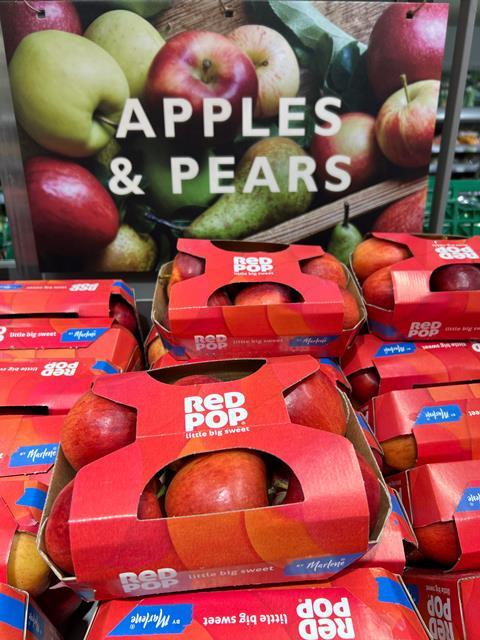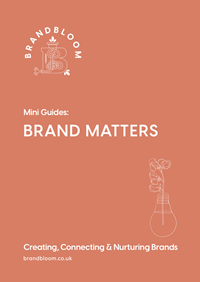How can fresh produce brand owners get their trademarked products seen by supermarket shoppers? That’s not always easy, but also not impossible, says Naomi Farmer of Brandbloom

How do you land a fresh produce brand on a retail shelf? It’s a good question, not least because the battle between own brands and supermarket private labels is intense.
For many years, I have consulted with retailers and producers on this issue. What is clear is a lack of understanding around what branding is, and is not, and about how to make a convincing case to add a new brand in a busy retail space.
A brand, or a logo?
Most people think branding starts with a need for ‘some sort of logo’. This is why services like Fiverr and Canva thrive, because if you start with a logo then these are sufficient for creating a visual presence. But without context, a logo means nothing.
I challenge you instead to start with a little exercise, one which helps us really to understand what we want to achieve and, more importantly, why.
People talk about ‘finding your why’. This can be confusing, but it is essentially about values. Your values inspire your passion, and if you are passionate about something you can inspire those around you. This gathers a crowd – advocates – and group advocacy creates leverage. Leverage gives you influence, which in turn creates visibility, desire within your market, and therefore success.
Here is one way to pitch a sale…
We grow amazing apples!
They are delicious, sweet and juicy.
Would you like to buy one?
This pitch starts with ‘what’, which is a common approach. Instead, try starting with ‘why’…
We believe our customers deserve fruit that is grown ethically.
We provide this by paying farmers a fair wage, respecting the environment through our growing processes, and managing waste effectively.
We care for our farmers, so they care for your apples.
Would you like to buy one?
People often talk about finding a point of difference, but sometimes we focus too much on this. Rather than force one, it can be better to create a robust system of values to which people can relate. The much less generic second example gives the customer values with which to align, and is more believable.
There will always be competition, and sometimes forced uniqueness fails to convince. Don’t be afraid to do the same as someone else. Just focus on doing it well.

Brand architecture
If we start with a logo, we leave no room for growth. How does this brand extend? How do future products fit? What is the hierarchy?
When this is not supported by a clear brand strategy, it is often confusing. Additional names and logos are created, and you end up with a communicative mess that nobody in the company can understand or explain.
Portfolio companies like Coca-Cola continue to grow their influence through acquisition, and have largely allowed their brands to retain their individual identities.
Drinks brand Innocent came under fire when it was sold to Coca-Cola, because its values were perceived as incompatible with its parent company’s. Coca-Cola was arguably trying to add a healthier branch to its portfolio, whilst recognising that the upcoming generation wants to reduce sugar and unhealthy choices.
However, the Innocent brand structure is strong. It sells…
- Smoothies
- Super smoothies
- Juices
- Innocent Plus
- Bubbles
- Kids’ drinks
- Coconut water
Its vision is…
People and planet are at the heart of everything we do.
To reflect this…
- They have B-Corp certification
- 10 per cent of their profits go to good causes
- They are building a sustainable factory
- Nutrition is at the heart of their products
- They are ‘Recycling Activists’
- They are ‘Farming Champions’
- They are ‘Climate Changers’
- Inclusion and diversity matter to them
- They invest in human rights
- They are addressing the gender pay gap
To make a vision statement like Innocent’s, you absolutely must be involved in those issues to be credible. It costs money, but that is why the public loves the brand, which means it gets a return on its investment.
It seems that what prompts many growers and suppliers to create a brand is a desire to generate additional revenue streams, or a point of differentiation amongst competitors. It is no secret there is significant equity in a successful brand.
Retailers who work hard to build their own brand amongst consumers, and are then asked to make room for someone else’s, might well feel aggrieved.
We have put together a short workbook exercise to help you to reflect on how you might go about creating a brand. You can download it below.

Brand Matters
Download a copy of Brandbloom’s Brand Matters, a free mini guide to creating, connecting and nurturing fresh produce brands.
DOWNLOAD


